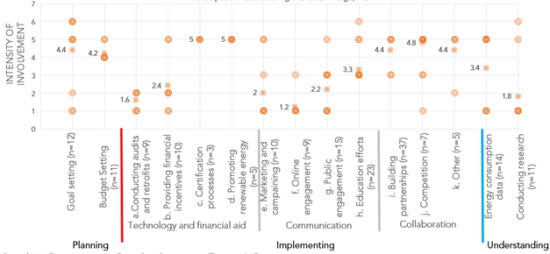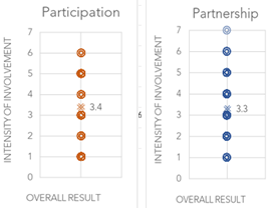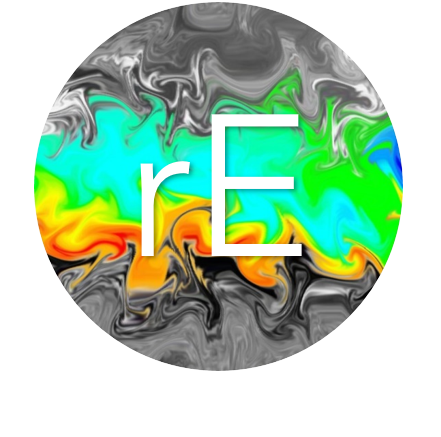By Jorge Morales Guerrero, PhD student in Sustainable Energy, and team member of re-Engineered.
One of the goals of re-Engineered is to learn from past experiences of individuals and communities to overcome the main challenges and injustices of our present. For example, in the practice I do in re- Engineered, I have been focusing on creating and implementing analytical tools to learn from hands-on projects. In this blog post I present one slice of the research work that I am conducting about the Georgetown University Energy Prize (GUEP). The goal of this project is to learn and understand how communities and individuals organized to decrease their consumption of gas and electricity at municipal and residential scales.
Historically, experiences in competitions and prizes—like GUEP—have shown that these events can accelerate the development of new technologies and encourage participants to find innovative ways to solve specific problems. With these ideas in mind and under the direction of Dr. Karwat, we designed an empirical method of analysis that could show how communities—small to medium municipalities inside the US territory and with populations between 5,000 and 250,000 [i]—organized during GUEP to decrease their consumption of energy.
I like to think of this empirical research as a video game. For example, in Super Mario Bros., after you completed a ‘world’ or level, you would get a score of your performance, right? This score, I remember, described the number of coins you collected and the time it took you to finish the level; it may also include an aggregate final score.
We did something similar. We utilized qualitative methods to identify the stages of the process and the activities that were implemented across GUEP. With this structure in hand, we were able to quantify (in a 1-7 scale, see figure 1) how GUEP organizers and community leaders involved the public and the stakeholder groups that were part of these activities. The following graphs (figures 2-4) are examples of how we mapped the scores that we were able to identify through this method of analysis.

Figure 1: Scales of participation

Figure 2. Example of the participation scores one community. It maps how the community was engaged during GUEP activities

Figure 3. Example of the partnership scores of one community. It maps the number of stakeholder groups involved during GUEP activities
Figure 2 and 3 present the activities that were developed during the prize, the averages (represented by x with the number on the right) and the scores (represented by circles) that a community obtained across this analysis.
 Figure 4: An example of the final scores of one community
Figure 4: An example of the final scores of one community
Figure 4 shows the final scores of one community. For example the average of partnerships is 3.3, so we can conclude that more than 3 stakeholder groups participated in the efforts of this community. Where as a 3.4 in participation shows the average on the type of participation through which the public was involved.
These graphs mapped a score in similar ways as some video games do. The difference is that here we mapped the number of partnerships and the forms of participation that were utilized in the activities and stages of the process in GUEP. We imagine this method as a mechanism to keep an eye on how community members and stakeholders are involved in energy and development projects.
We hope this research will illustrate an accurate picture of GUEP experience. We believe this effort could inspire community organizers and government staff to plan future practices that help us create a more just world. We are thankful for the amazing job that GUEP participants did during the competition; their experiences are the cornerstone of this work.
If you want to know more about this work, please contact me, Jorge Morales Guerrero, at jmoral31@asu.edu
[i] https://www.guep.org/docs/20171009_GUEP_Guidelines_v8.5.pdf
